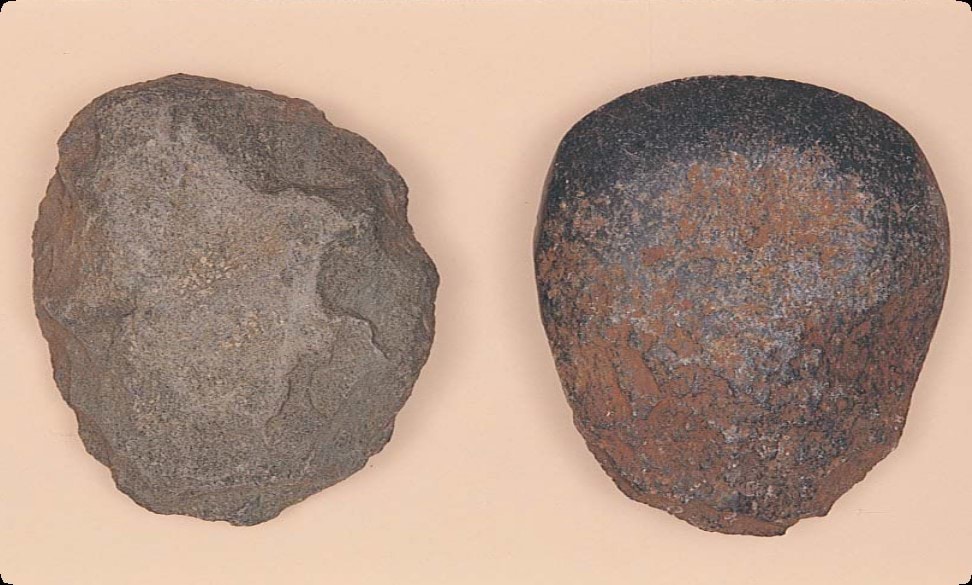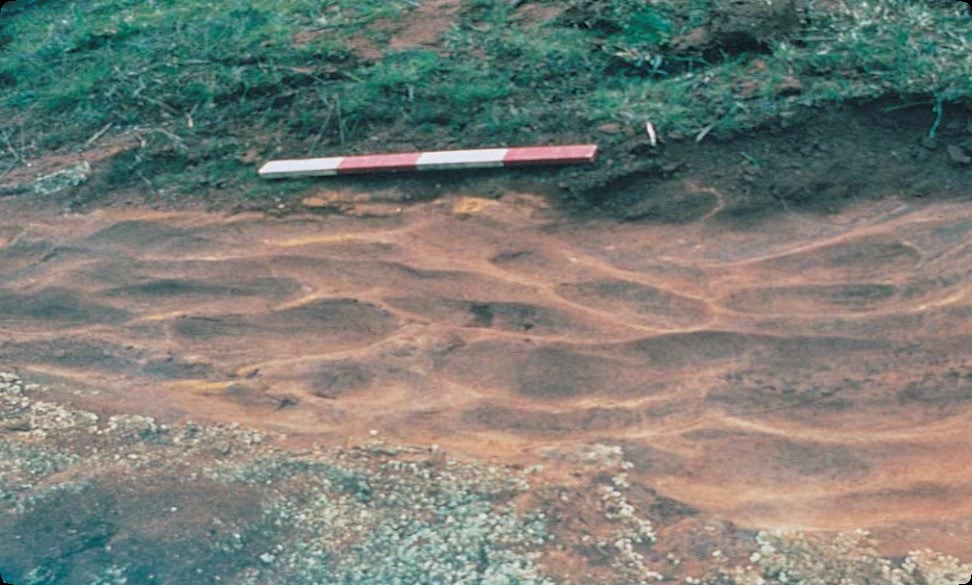Characteristics
- shallow, oval-shaped grooves indent the surface of sandstone outcrops
- outcrops are usually low and rocky, and the sandstone has fine, uniform grains
- grooves are often in clusters of 2 to 5
- length ranges from 80 to nearly 500 millimetres
- depth can be up to 200 millimetres wide and 100 millimetres deep
- generally found near water

What are Aboriginal axe-grinding grooves?
Axe-grinding grooves are oval-shaped indentations in sandstone outcrops. Aboriginal people made the grooves when they shaped and sharpened stone axes by grinding them against the sandstone.
Flat, low outcrops of fine-grained sandstone were used to give stone axe heads a sharp cutting edge. Sometimes, Aboriginal people also carried small pieces of sandstone for sharpening axes, and these portable pieces were often gouged on more than one surface.
Other Aboriginal artefacts are sometimes found near axe-grinding grooves.
Where are they found?
Axe-grinding grooves are almost always found along the edges of rivers, creeks, lakes and swamps, or near dry or drained water bodies.
How did Aboriginal people produce axe-grinding grooves?
Aboriginal people used axe-grinding grooves to finish partly made axes (known as ‘axe blanks’) or sharpen axes that were worn or chipped.
Axe blanks are pieces of stone that Aboriginal people chipped into a basic axe shape at stone quarries and sharpened by rubbing the edges over sandstone. This rubbing action left grooves in the outcrop surface.
Aboriginal people often sprinkled water on the sandstone to make it more abrasive and to reduce dust. This is why the grooves are usually found on outcrops close to water.

Why are axe-grinding grooves important?
Axe-grinding grooves are an important link for Aboriginal people today with their culture and their past.
Aboriginal axe-grinding grooves are rare. They provide valuable information about how stone tools were made. They increase our knowledge of past Aboriginal land use and ways of life.
Are axe-grinding grooves under threat?
Sandstone is a relatively soft stone that is gradually worn by weathering, erosion and trampling by animals. Human activities such as mining, road building, damming, clearing, ploughing and construction can also destroy these places.
First Peoples - State Relations records the location, dimensions and condition of Aboriginal grinding grooves.
The aim is to have a permanent written and photographic record of this important part of the heritage of all Australians. Management works around Aboriginal grinding grooves, such as stock and erosion control, help preserve the places for future generations.
Are Aboriginal axe-grinding grooves protected?
All Aboriginal cultural places in Victoria are protected by law. Aboriginal artefacts are also protected. It is illegal to disturb or destroy an Aboriginal place and artefacts should not be removed from site.
What if you find axe-grinding grooves?
- Do not damage or interfere with the sandstone outcrop or remove any material
- Check whether the place has the typical characteristics of Aboriginal grinding grooves
- If it does, record its location and write a brief description of its condition. Note whether it is under threat of disturbance.
Please help to preserve Aboriginal cultural places by reporting their presence to First Peoples - State Relations.
Updated

